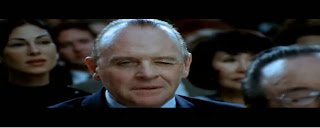Horror
The openings to the two horror films were similar but
different in many ways. For example in
‘The Strangers’ the opening has a slight saturated tint on the image. However
in the opening to ’28 Weeks Later’ there is no tint but the image uses very low key lighting. The slight saturated tint to
the image builds tension as it causes the audience to anticipate that something
is going to happen at some point in the near future of the film. In contrast to
this the low key lighting in the second film builds ambiguity and leaves
the audience questioning as to whether something is lurking in the areas of the
screen that are hidden due to the lack of lighting.
As well as this both films use hand held
camera work to shoot the scenes the director wanted to capture. This adds a
sense of uncertainty to the scene as the picture is distorted and the
surrounding area cannot be scene completely so could leave things hidden to the
audience, allowing things to be lurking around. In 'The Strangers' the hand held camera is used through a POV shot, which gives emphasis on the main character and what's chasing her, also it gives the impression that there is someone else there catching what is happening on video, that is then created into a film. This allows the audience to step in to that role as it is the angle they are seeing things from, so begin to think that they are the ones there filming what is happening bringing a sense of realism to the film.
Finally within
both clips there are quite short shots before a cut to a new image. This creates an impression of urgency within
the scene and builds angst within the audience as they can guess that something
is about to happen. For example in '28 Weeks Later' the shots are very short before they change who they focus on whilst the characters are sat around the table eating their dinner, this then builds the urgency within the film that leads to the young boy knocking on the door. This can show every character's reaction to the audience which will then enable the audience to reciprocate the fear or sadness that the characters are feeling, as they start to find out what is happening.






